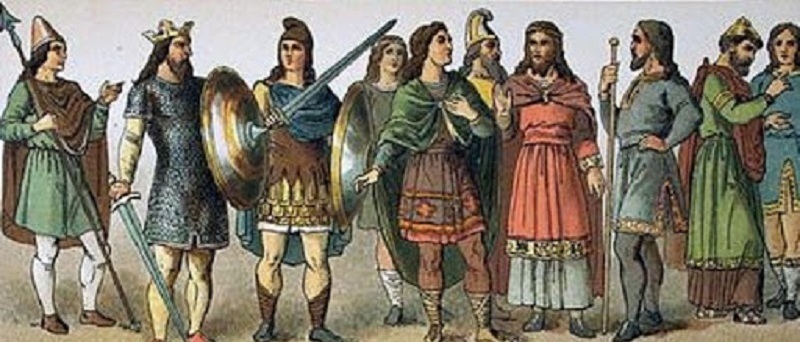Medieval Mens Clothing
Posted on 1st January 2021
Clothing in the middle ages was made of wool and linen, this being the cheapest and most common material of the age. Over time as trade improved, the wealthy used silk to make clothing dyed into many colours; the style also changed more for the wealthy as they followed the dictates of fashion. In the later middle ages, clothing was often adorned with jewels and the clothing itself had embroidered edges and hems.
Many dyes were used including:
Roots
Tree Bark
Iron Oxide
Nuts
Some were available to the poor, but the brighter and richer the colour, the more expensive the dye became.
Underclothes - Made of linen and sometimes wool, including a shirt, under tunic and underpants.
Tunic - A long sleeved or sleeveless item depending on the weather. A one-piece item that was pulled over the head and belted at the waist. Sometimes multiple tunics of differing lengths were worn together.
Through the middle ages the fit and length of the tunic changed however the style remained the same.
Trousers - Ankle length and belted at the waist, worn by the wealthy and made of linen.
Stockings or leggings - Made of wool and worn by all. Wealthy had their stockings custom made, the poor made them from old clothes and blankets. Another layer of stockings made of leather, for warmth and protection often covered woollen stockings.
Cloaks - Made of sheepskin or wool, they were fastened at the shoulder or front by a pin, clasp or brooch. Wealthy nobles trimmed their cloaks in fur and in the later period made their cloaks out of velvet. Cloaks worn by nobles were often longer in length than those worn by the poor.
Hats and Hoods - A hat made of linen, hemp or felt with string attached to fasten under the chin. Many people wore hoods, some standalone and others attached to capes to cover the head and sit over the shoulders.
Footwear - Shoes made of leather straps fastened with laces. Leather boots were also worn.
Belt - Worn for necessity to fasten a cloak, hold up trousers and belt a tunic.
Tagged as: Junior Middle Ages
Share this post:





